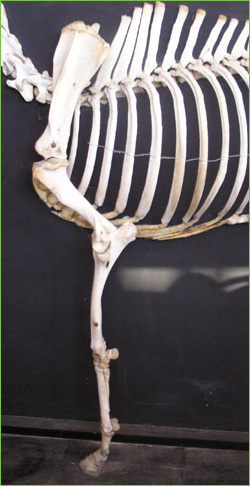Diagnosing lameness

Skeletal forelimb.
The musculo-skeletal system is very complex. It's comprised of bones, cartilage, muscles, ligaments and tendons and its primary function is the support of the body, its motion and protection of vital internal organs. Assessing disorders of the musculo-skeletal system is therefore complicated.
Diseases or disorders of the musculo-skeletal system most often involve motion deficits or functional disorders. The degree of impairment depends on the specific problem and its severity. For example, one of the most common musculo-skeletal disorders in horses is lameness. Lameness is the result of a change from normal stance and gait caused by either a structural or a functional disorder of one or more of the limbs, the neck or the trunk.
For example, when a vet is presented with a lame horse, the most obvious sign will be at the walk. Pain-related lameness can be classified as weight bearing (supporting leg) or non- weight bearing (swinging leg), although lameness is most often composed of both.
Diseases or disorders of the musculo-skeletal system most often involve motion deficits or functional disorders. The degree of impairment depends on the specific problem and its severity.

